An itinerary for 2023 on how to spend two weeks in Sri Lanka
Sri Lanka literally means “brilliant island”. It has been a popular holiday destination for more than ten years. This country has a complex cultural history that can be traced back thousands of years. Even today, you can still visit the incredible ruins of ancient kingdoms scattered throughout the country, which are covered by dense forests.
Sri Lanka’s spices, gemstones and the most important geographical location make it the target of continuous European colonization. From the Portuguese (with almost no evidence) to the Dutch and British, they have left remarkable traces of occupation. On the plateau, several acres of tea gardens cover the hills, and the tea produced is enough to make Sri Lanka the fourth largest tea producer in the world.
Here, the dollar and euro can make you go further, which is why many people mainly rely on hiring drivers to drive between different destinations. However, the country also has a strong public transport network, so those willing to participate in the bus and train network across the country can easily cope with it.
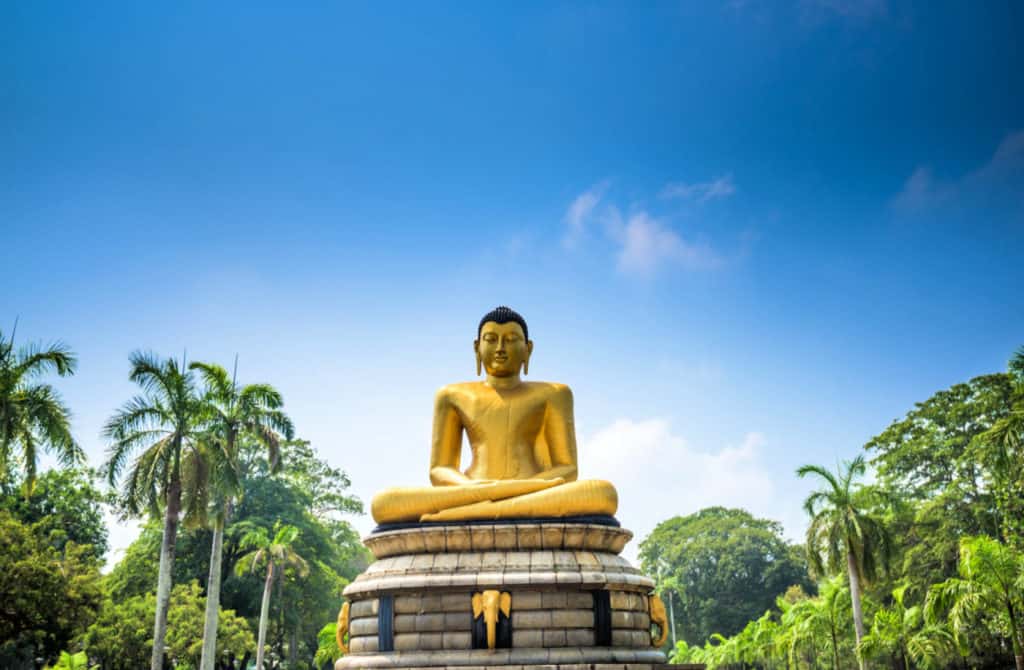
first day. Colombo
Almost all trips to Sri Lanka began in Colombo, the former capital of Sri Lanka, which is still the largest city. Start with leisure and visit Wihara Mahadwi Park, which was built by the British colonial government but is now a public green space for all. There is a huge golden bodhisattva in the park, opposite the white neoclassical exterior wall of the broad city hall. You will notice that this contrast between the West and the East exists throughout Colombo. It provides some magnificent examples of colonial architecture and more traditional Sri Lankan icons.
If you want to learn more about the complex past of this country, we sincerely recommend you to visit the Colombo National Museum, which is only a few steps away from the Mahadavi Park in Vihara. Each exhibition hall takes you through thousands of years of history through cultural relics of different periods. Believe us, when you visit the historic sites of Sri Lanka in the future, you will find this is a valuable reference point.
Continue south, and you will come to the Independence Memorial Hall, which is a carefully designed building composed of carved columns and wood carvings, with statues of lions on both sides. Different aspects represent different local handicraft traditions. The statue of D.S. Senanayake, the first Prime Minister of Sri Lanka, presided over the building.
Finally, enjoy dinner at Paradise Road, an institution in Colombo, located in the building conceived by Geoffrey Bawa, the most famous architect in Sri Lanka. Although the dishes in the gallery cafes are standard western food, the outdoor dining experience in the evening is a wonderful way to end the first day when the pavilion is subtly lit by the atmospheric light.
Accommodation in Colombo. There are several five-star hotels with hundreds of rooms in this city, but we chose more boutique experience and stayed at Taru Villas Lake Lodge Hotel. The room is spacious and lovely, and the geographical location is superior. It is suitable for walking in the Mahadwi Park in Vihara or visiting the Gandalamia Buddhist Temple.
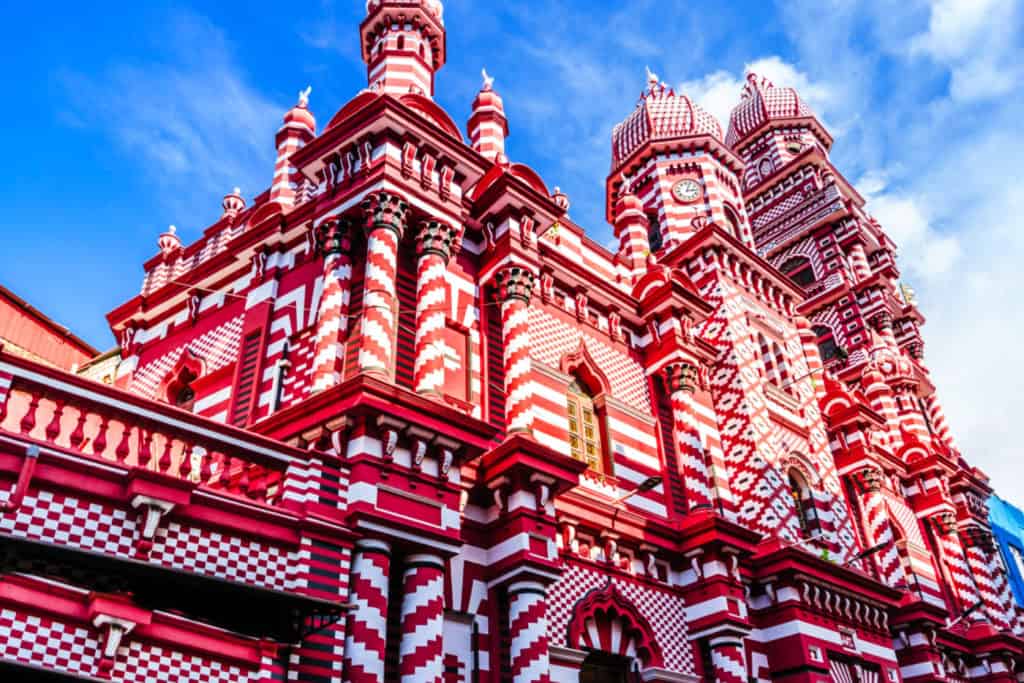
the second day. Colombo
Now that you have a preliminary understanding of the history and culture of Sri Lanka, it is time to truly integrate into the modern hustle and bustle of Colombo. Sneak into the alleys of Peta District, where local people carry out daily shopping in food markets, clothing markets and other ordinary stores. This is a kind of chaos, glorious chaos!
Among these commercial facilities are some eye-catching religious buildings, such as the red and white Jami-Ul-Alfar Mosque and Sammangodu Sri Kathirvelayutha Swamy Kovil, a Hindu temple whose outer walls are completely covered with various gods. Although Sri Lanka is dominated by Buddhism, these buildings are powerful reminders of its multi-religious, multi-ethnic and multi-cultural past and present.
Colombo generally provides you with a lot of sometimes shocking comparisons. For example, not far west of the crowd in Pettah is the elegant fortress area. Long ago, it was the base of the first batch of Europeans. At present, this area is the central business district of Colombo, where the glass skyscrapers and the remains of the colonial period complement each other, such as the 17th century Dutch hospital and the landmark Kajils building.
After a busy day, I unloaded the burden at Galle Face Green. This evening leisure place is a narrow beach close to the sea. You can soak your toes in the water, then retreat to a temporary bar nearby and drink a bottle of iced lion beer. Make sure you don’t miss the street food at a stall next to the Garrett Green. We are loyal fans of Nana, especially their kottu: roti bread cut with eggs, gravy, onions, chilies and meat.
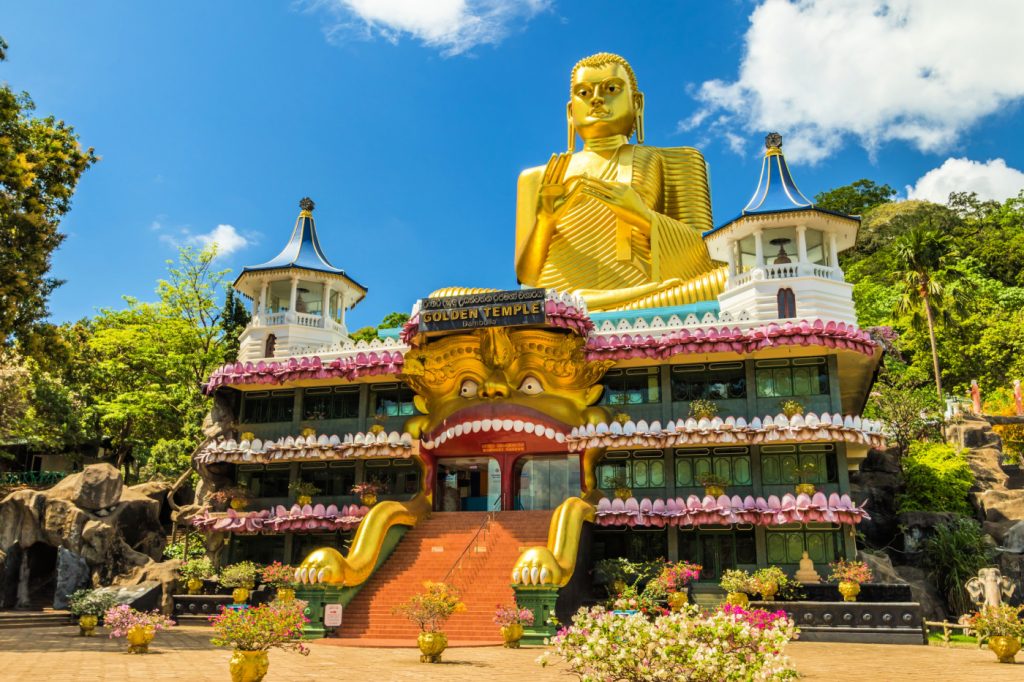
Day 3: Dumbler
The oldest kingdom of Sri Lanka often thrives in the center of the island, which is also where some of the country’s most historic attractions are located. If you are pressed for time, or want to spend part of your 14 days in Sri Lanka in the popular beach resorts on the east coast, you can book a tour group like this from Colombo to visit some highlights in one day. However, if you are not in a hurry, you can visit by yourself and spend more travel time exploring the past.
There is a big difference between the prosperity of Danbule and Colombo. It is a quiet rural town and a perfect base for exploring several unique treasures of Sri Lanka. The easiest way to come here is to hire a private driver to take you for three hours. Although it is more expensive than jumping on and off buses and trains, it is much faster and still quite affordable.
Danbule is the site of a famous cave temple group, which contains Buddha and Hindu gods. It is said that these caves have been used for worship since the 1st century BC, but most of the things you see today are added hundreds of years later. Although we initially thought that the bright colors on the roofs, walls and statues had been miraculously preserved in the UNESCO World Cultural Heritage, they were actually repainted and restored regularly to maintain their original appearance.
This building complex is not extensive. You can easily walk through all five caves in an hour, although there is a way up the mountain to reach the area. One very important thing to remember is that, like all religious places in Sri Lanka, if you do not cover your shoulders and legs, you will be refused entry. Some popular tourist attractions have extra clothes to lend you, but why do you take the risk, huh?
Dobler’s accommodation: This lovely hotel has the most beautiful host we have ever seen. The room was very simple, but very clean. The rich breakfast kept us until dawn. Although you are surrounded by green plants and wild animals, you only need to walk to the center of the town, where you can find shops and restaurants. In addition, the homeowner will help you organize tours to nearby scenic spots.
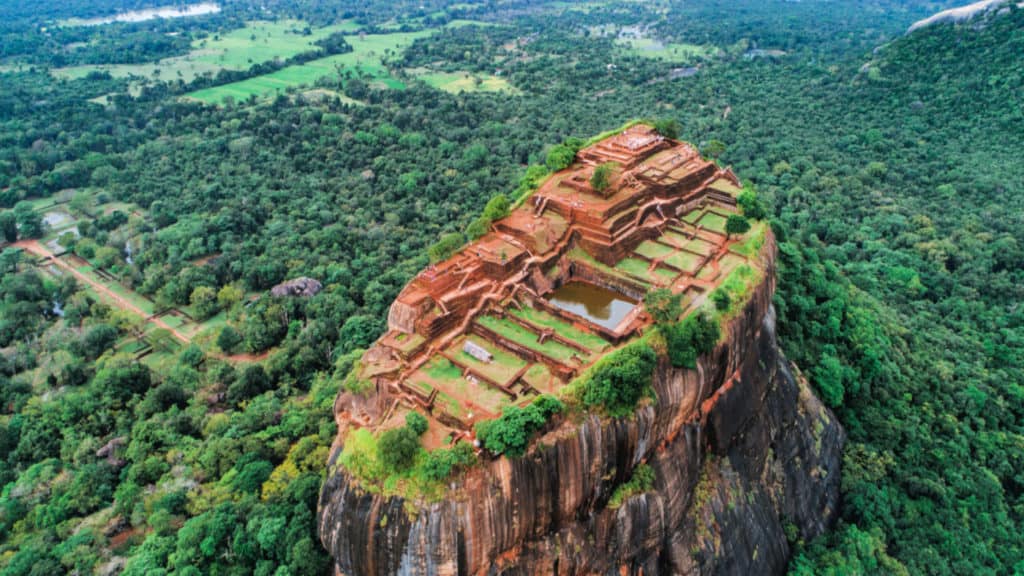
The fourth day: Sigiriya
Danbule is an interesting place to start exploring the ancient Sri Lanka, but Sigiriya has raised this experience to a new level. This fortress was carved from a single rock pillar on a flat land in the 5th century AD. Its name was translated into “Lion Rock” because the original gate was built like a huge lion. Now, the stone beast has only its front claws, which frame the steps leading to the top of the mountain.
This is a quite old climb, but there is usually a slow-moving team to climb the top, which means there is enough time to rest. On the way up the mountain, you will see graffiti with a history of thousands of years and some pretty murals.
At the top of the hill is the castle itself. It is a ruin of its former glory. Now it is the occasional monkey rather than the royal family’s home. However, there are still enough layers left. You can imagine what a great building it was. In addition, you can also see the land below, including the remains of the waterscape garden decorated on the road leading to the Lion Gate.
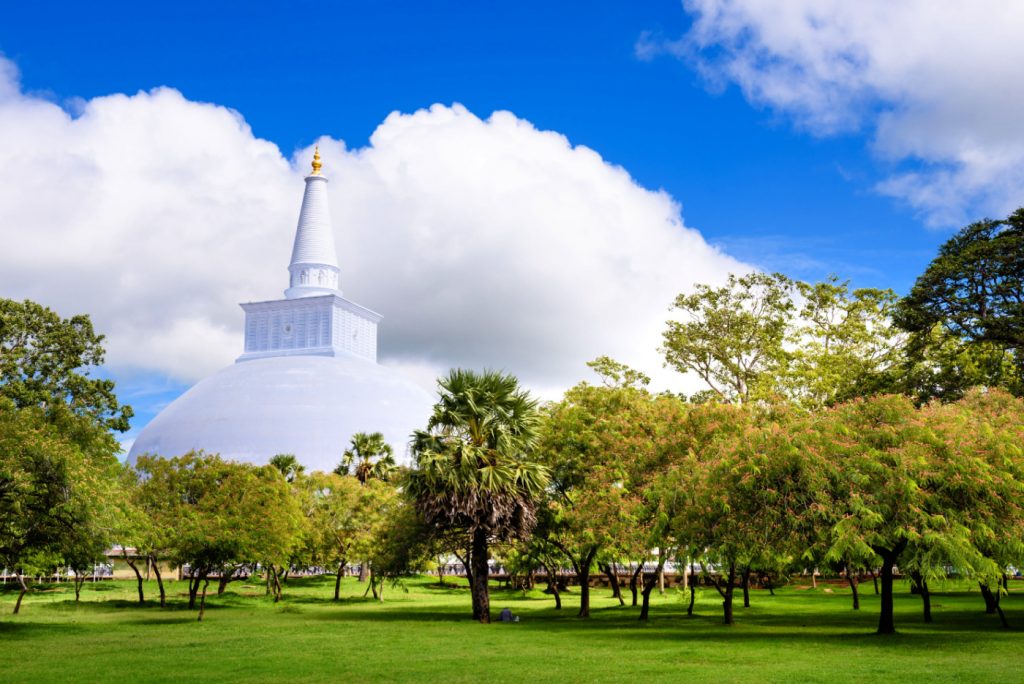
Day 5: Anurad Pul
Another day, another day’s trip, this time to Anurad Pul, the seat of the ancient Sri Lankan monarchy. This royal city began to exist in 400 BC, but it has been expanded in the following centuries.
This is one of our favorite places in Sri Lanka. There are a lot of things to see. It is distributed in a fairly large area — after all, it was once a complete city — so you may not be able to see it in a day. However, among many scattered monuments and relics, there are a few that you can’t miss.
The first is Ruwanwelisaya, a restored pagoda originally built in 140 BC. This huge dome is 951 feet in circumference and 338 feet in height. Except for a golden tip that twinkles in the sun, it is completely painted white. You have to take off your shoes to visit. In midsummer, it means jumping over the burning brick floor — at least, this is what we who don’t wear socks are forced to do, which makes local Sri Lankans feel very interesting. They are completely indifferent to the high temperature of the ground.
After a short walk, Jaya Srimaha Bodhi was bound by the protective fence. According to legend, this holy tree was grown from the pruning of the Buddha when he was enlightened under the tree.
Ruwanwelisaya and Jaya Sri Maha Bodhi are places where religious believers often go. In the same area, Jetavana is a destroyed temple, which can be said to be more atmosphere. At its center is the tallest pagoda in Sri Lanka, which is 400 feet high. The pagoda has also been repaired, but it has not been painted, exposing the red earth bricks. On the outside, you can still see the beautiful relics of the original white sculpture in the 200’s.
If you want to see another example of the temple complex in Anurad Pul, you can go to Abayagiri, although it is not so impressive in our view. However, it is not far from the Kuttam Pokuna. These two pools are of gorgeous workmanship. It is said that the king and queen once bathed here.
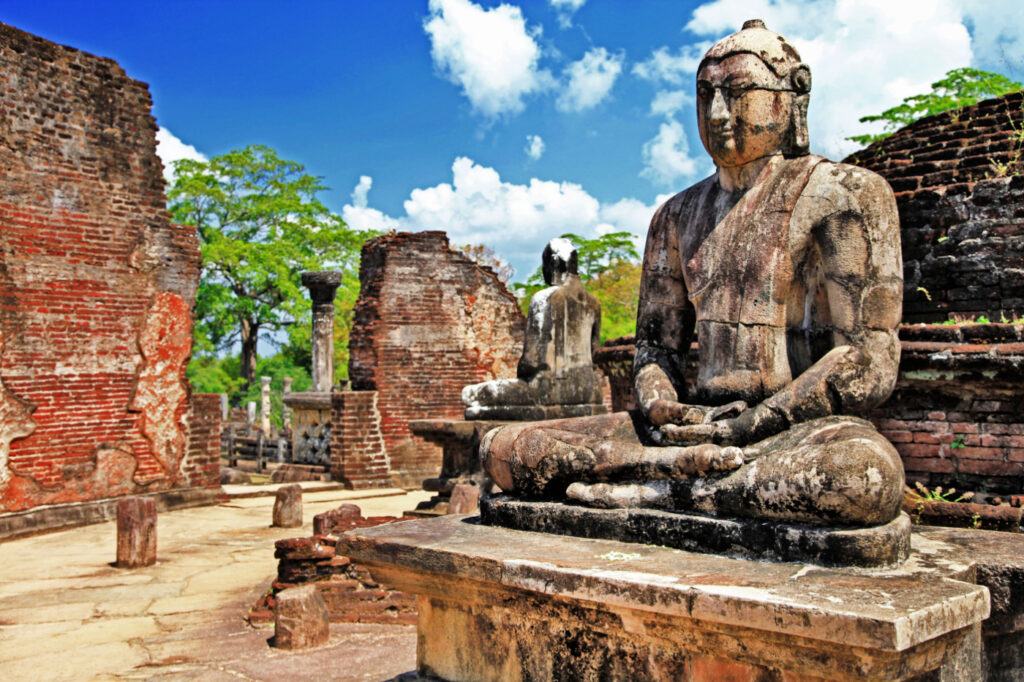
Day 6: Bolonnaruva
The last point of Sri Lanka’s so-called cultural triangle is Bolonnaruwa. This is another well-preserved ancient city, which became the capital of Sri Lanka after the invasion of Anuradpul in the 11th century. (Yes, we did spend a lot of money in Colombo National Museum!).
Undoubtedly, the most impressive remains of this kingdom are in the place known as the Dalada Maluva. Our personal favorite is vatadage, a completely unique circular temple, which retains some complex sculptures. There are two other temples nearby, namely Hatadaji and Atadaji, which are not so attractive, but still contain interesting examples of Buddhist statues. Finally, Nissanka Latha Mandapaya. Because of its beautifully carved lotus columns, we took pictures of this area crazily.
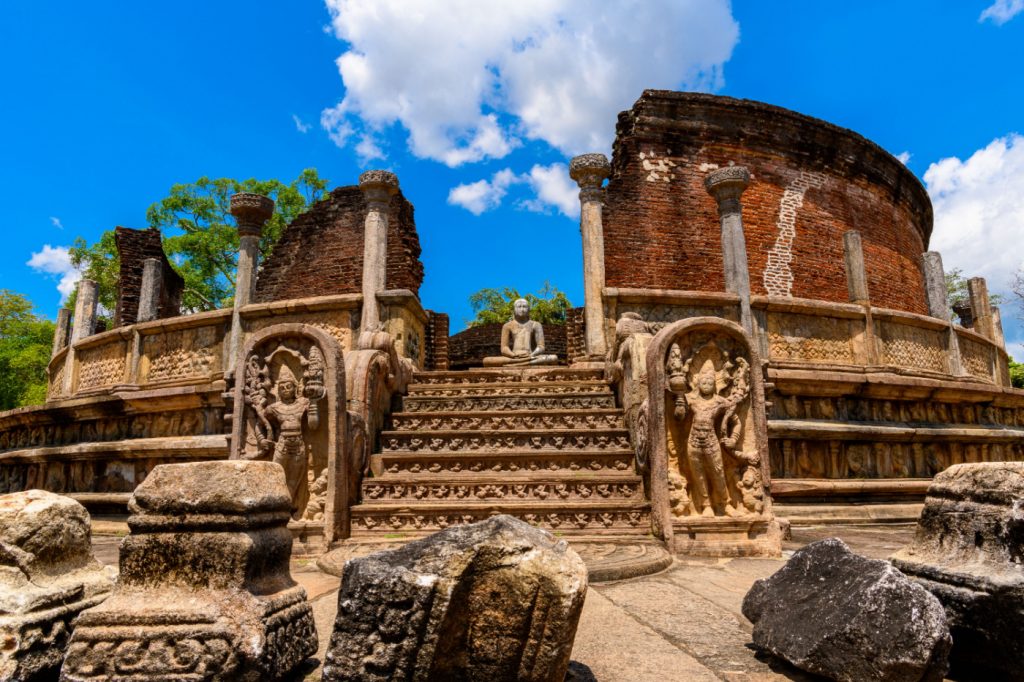
If you haven’t played enough with the pagoda, you can go to see Lancot Vihra, which is built in imitation of the architecture of Anurad Pul. However, for Bolonnaruva, what is more unique is the unique Buddha sculpture that has always been adhered to. Gal Vihara has four different Buddha statues carved from granite, while Lankatilaka Temple has a huge headless Buddha statue made of bricks.
Of course, not all the huge buildings in Bolonnaruva are built for religion. Some castle buildings of the royal family still exist, including magnificent palace walls, conference halls with artistic sculptures and luxurious bathrooms.
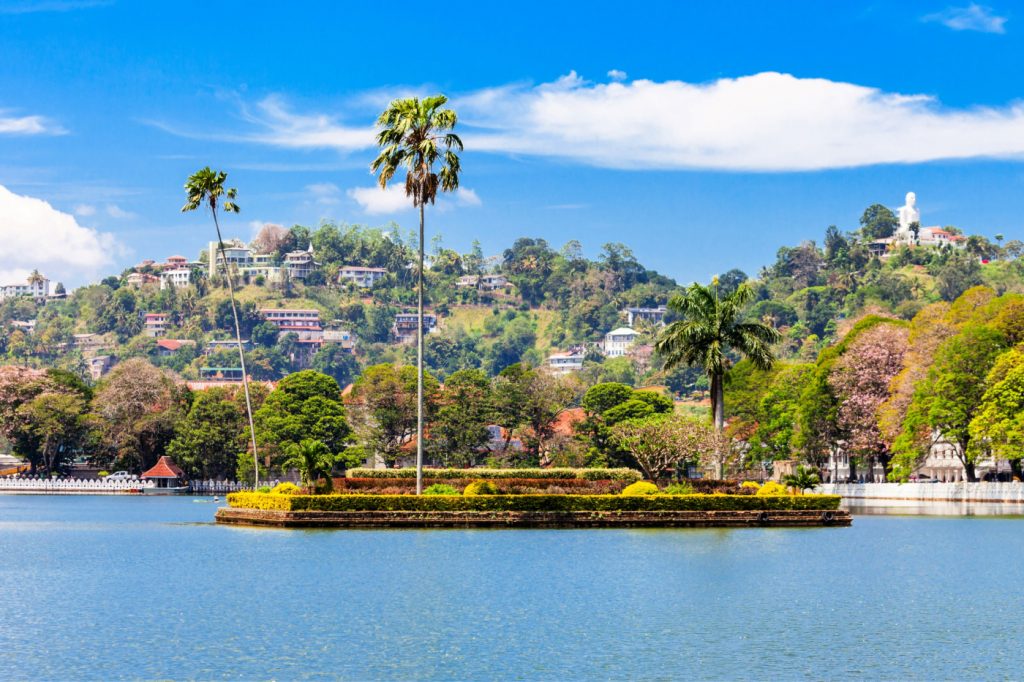
Day 7: Conti
After a long stay in the countryside, it is time to return to urban life. Like Anuradpul and Polonnaruwa, Khanti was the capital of Sri Lanka. Unlike the other two cities, it is still a major city — although it has only a few hundred thousand people.
One of the most famous scenic spots in Kangti is the Tooth Temple, which was built to store the sacred relics of the Buddha’s tooth and is part of the former imperial palace. If you visit at the right time (the end of July and the beginning of August), you can buy tickets to watch the carefully designed annual parade. At that time, the Buddhist tooth relics will cross the city’s streets accompanied by religious leaders, colorful elephants and traditional performers. It was a wonderful experience (although it was too long).
Another name of Kangti is its artificial lake, built by the last king of Sri Lanka before being deposed by the British. Today, in the center of the city, it is a peaceful place to escape from nature.
Accommodation location of Conti. The city center of Kangti is a bit messy, so it’s better to stay in a hotel on the city’s Fangshan, and then use tuktuk to walk around. The beautiful pink building of Villa Rosa is a good choice. Although the beautiful scenery is inevitable, what really amazes us is the traditional style decoration.
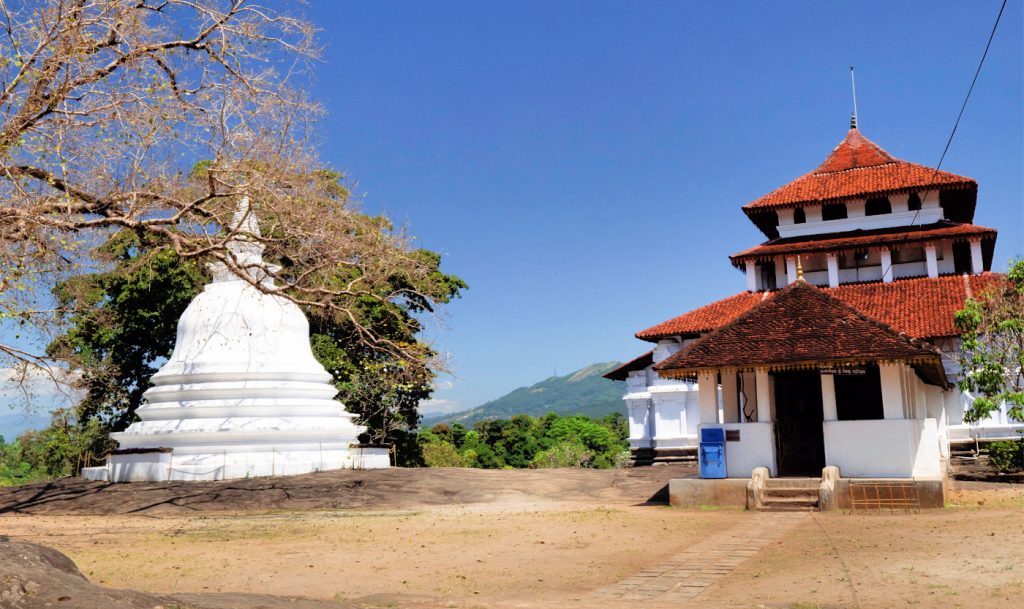
Day 8: Conti
In Canto, there is nothing more elegant than walking in the urban botanical garden in Peradeniya, a suburb. As early as 1371, this place was used as an entertainment garden for members of the royal family. In the 19th century, the British redesigned it according to the idea of the famous Qiu Garden in London. Now there are more than 4000 kinds of plants and flowers.
In these suburbs, there are also three small temples built at the same time. Each temple has its unique characteristics and is more peaceful than the tooth temple. Our favorite is Lankathilaka, which is a white building built on the top of the mountain and can see the surrounding scenery. In contrast, Embekka is much more low-key, but has some exquisite and well-preserved sculptures. Gadaladeniya may be the most boring of the three. Its murals have faded and the stone structure is poorly maintained. However, it seems that someone is trying to prevent the main temple from collapsing completely.
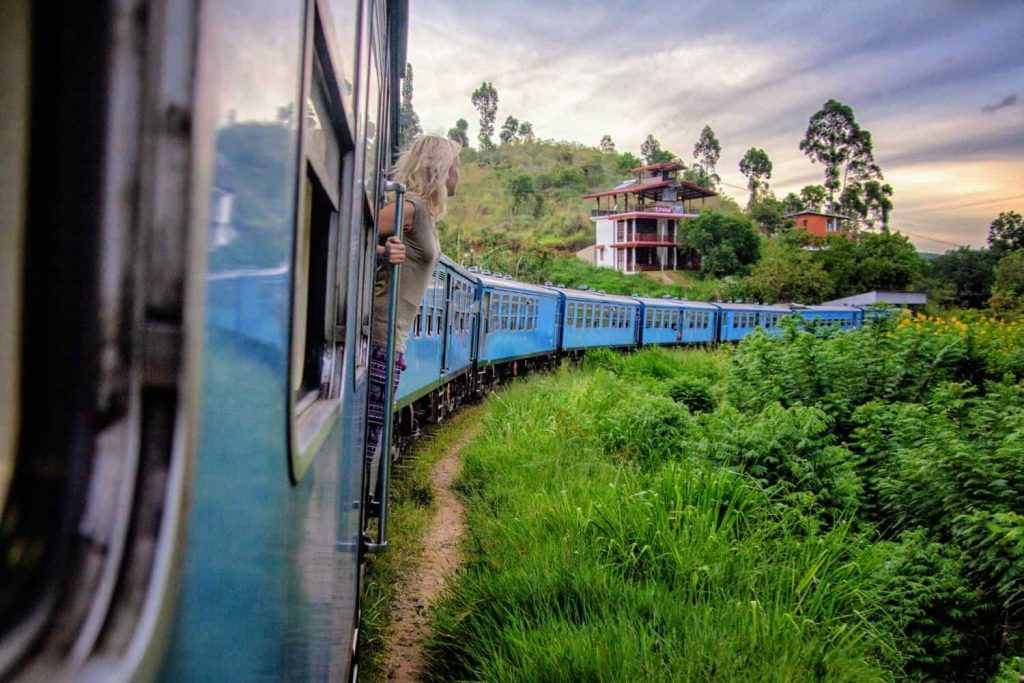
Day 9: Enter the highland
One of the most unforgettable experiences in Sri Lanka is to take a beautiful train and enter the Tea Mountain. When you pass through the lush countryside, hanging on the side of the old-fashioned carriage is an unparalleled sense of honor.
There are several trains from Canto to Nanuoya every day, but only one train has an attached observation carriage. You can see nature directly while driving. Fair warning: zigzag journey is not suitable for carsick people. Depending on the train you take, the journey will take 3.5 to 4 hours.
When you put down your luggage in the hotel, immediately set out to see one of Sri Lanka’s famous export products: tea garden. There are many tea gardens around Nanuoya and the nearby city of Nuvara Elia, which provide similar production facilities and auxiliary shops. For the sake of simplicity, we suggest to ask your accommodation for nearby options.
If you can, you can take a rest in the afternoon, because you may need to take another risk at 10 pm to go to Adam Peak.
Where do you live? Hilldale Retreat Hotel has a beautiful view of the green countryside and surrounding tea mountains. This is a small hotel, so the staff are very careful. There is also a swimming pool here, but it is not heated, so it is only suitable for those who like swimming.
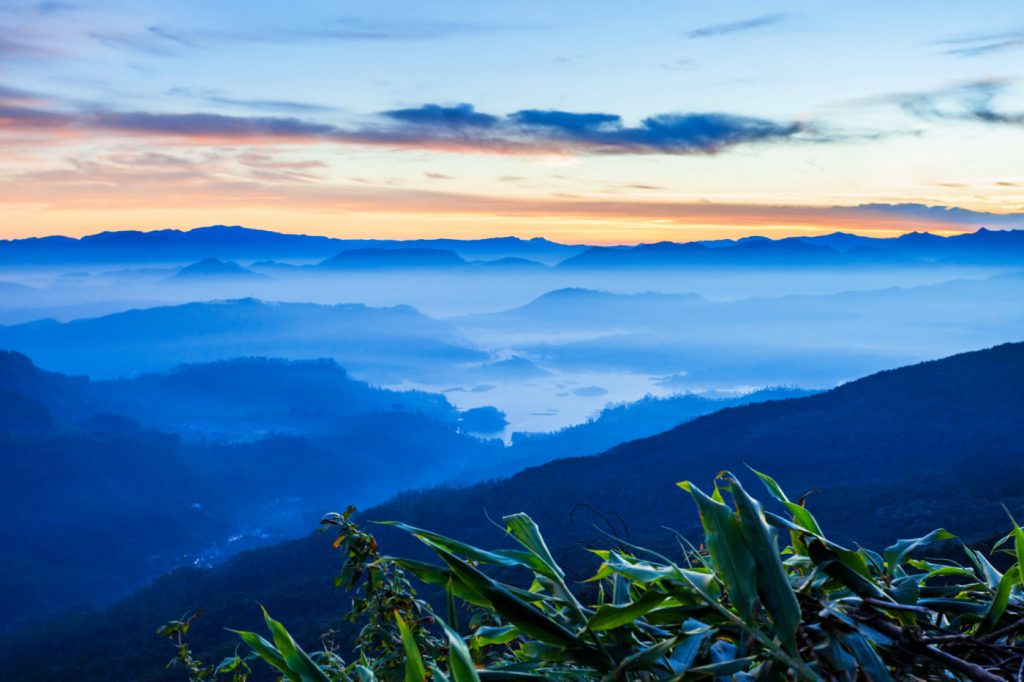
Day 10: Adams Peak
There are many legends about the “footprints” on the top of Adam Peak. Buddhists claim that it was left by the Buddha, while Muslims believe that it was created after Adam in the Bible was driven out of heaven, while Hindus believe that this depression is a sign that Shiva once walked here.
Part of the reason is the competition of various religious opinions. Part of the reason is that it is a spectacular mountain. Adam Peak is one of the most popular places of pilgrimage in Sri Lanka. Traditionally, you need to reach the top of the mountain at sunrise — besides, you will get the best view at this time.
When you need to arrive at the base depends on the time of the year, how fast you can climb and the route you take, but generally speaking, you should try to get there between 1 a.m. and 2 a.m. Then, when you are sleepy, you should crawl along some rather steep steps for about 3 to 4 hours, and then wait for the sun to rise in the cold. However, in order to see the bright sunshine from the horizon for the first time and slowly reveal the surrounding lush scenery, it is all worth it.
If you are like us, you will want to take some time to relax and wait for the sun to rise completely before going down. In the rest of the day, you can make up for those sleepiness, or relax with beer and books.

Day 11: Horton Plain
We are greedy people, so on the second day of Adam Peak, we went to Horton Plain for another hiking trip. Fortunately, the hiking trip was quite smooth because you drove to most slopes of the parking lot.
In the National Park, you follow a basically flat circular route through a grassy plain, with streams and unique plants that can only be found here. There is a beautiful but not particularly exciting waterfall called Beck Falls, but the main attraction — in addition to the natural beauty — is the end of the world, a sudden emergence of a steep plateau. Most of the time, the scenery of this place is shrouded in mist, and occasionally there are peaks mysteriously protruding – that is why Houghton is sometimes called Cloud Forest National Park.
When the weather is good, they say you can see Adam Peak and the east coast of Sri Lanka. To be honest, we don’t know whether this is true, but what a magnificent scenery it is!
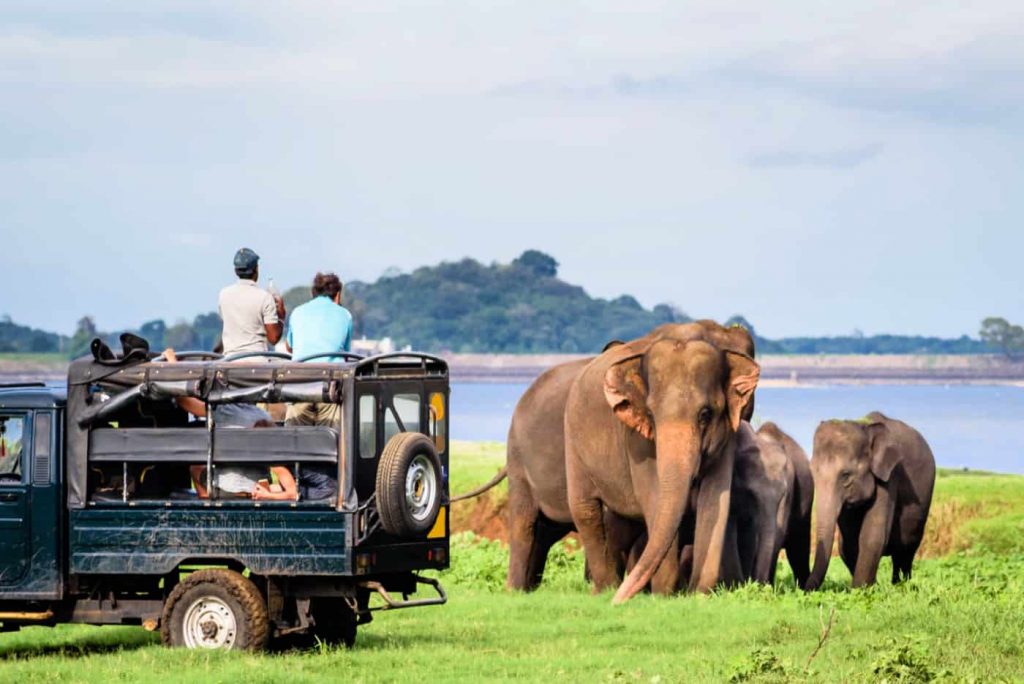
Day 12: Yala hunting
You can go to several places to see the most impressive wild animal species in Sri Lanka, but Yala won the popularity contest, because here you will certainly see groups of elephants doing their things, whether playing in the puddles, taking care of small elephants, or occasionally trying to get angry.
You can organize your own tour guide with 4 × The 4 car will take you through the environment, or book through a travel company like this. This is the bread and butter of many local people, so they all know how to catch a glimpse of the best place of animals in their natural habitat at different times of the day. In addition to elephants, we also saw crocodiles, buffaloes and elusive leopards, as well as many birds. Except for the most avid ornithologists, others could not remember.
You can book a full day’s trip, but to be honest, two to three hours is the best time: just can see the natural habitat of wild animals, without becoming too repetitive, and will not bump your bones into jelly on the rugged terrain.
If you don’t have too much luggage, we suggest you take your luggage to Yala, and then continue to Galle after the end of the game, because this will save you some travel time.

Day 13: Galle
Galle is one of the best preserved relics of the Netherlands in Sri Lanka, which lasted from 1658 to 1796. The cold atmosphere here makes it the best place to end your stay in the glorious island country.
The first thing to do here is to explore the streets and wander among the ruins of the colonial period, such as the ancient church and the lovely antique shops on both sides of Pedlar Street. Lunch at the Galle Fort Hotel, once an 18th century villa, is now a magnificent hotel with delicious seafood and one of the richest gin menus we have seen outside the most fashionable bars in London.
In the afternoon, climb up the old fortification surrounding the town. Now, these solid stone city walls and fortresses are covered with grass, which is picturesque and also a good place to shoot the sparkling sea.
Please make sure you also take the time to go to the photo lighthouse on the cape. It is located next to the unusual Meran Mosque, which was put into use in 1904 and was built according to the existing aesthetic standards. Therefore, it looks more like a Catholic church than an Islamic place of worship.
Where do you live? We decided to reward ourselves in the five-star experience of Print Castle to end our trip — it didn’t disappoint people. This is a gorgeous little place, just in the middle of Gallenburg, with careful staff and fashionable and clean rooms. The most important thing is breakfast, which is served in the beautiful yard beside the swimming pool.
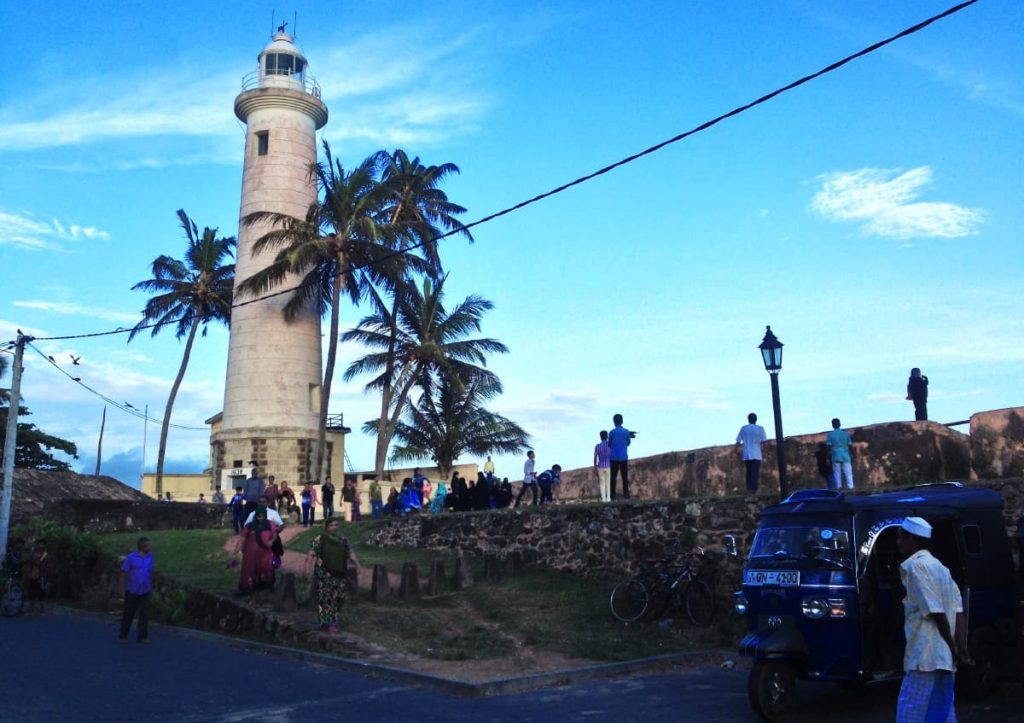
Day 14: Galle
During the two weeks in Sri Lanka, you have enjoyed yourself in multicultural cities, ancient kingdoms and national parks, and you have got the rest you deserve. On the last day in this country, you can bask in the sun on a beach around Galle.
Unawatuna Beach is a beautiful sandy coast, only a short tuktuk drive from Galle Fort. There are several restaurants and bars on the shore, which can help you eat and drink enough while absorbing vitamin D.
If you want to find a more secluded place, you can walk a little further along the coastline, and walk along a secluded path to the deserted and stony Bunavista beach. This secluded bay is also known as Jungle Beach because it is completely covered by the surrounding leaves.
Since most international flights take off from Colombo, you must return to the capital today or tomorrow. If you have time, you can book dinner at Nuga Gama Restaurant, a country-style buffet restaurant for you to eat. Although it is located in the five-star Cinnamon Hotel, its design is like a village canteen, providing all the main Sri Lankan specialties and cooking in a traditional way. All these, the price is only Sri Lanka Rupees 5900 per person (equivalent to about US $16). Be sure to try Hoppers: Delicate pancakes made of Rice noodles and coconut milk paste are traditionally filled with fried eggs and spicy samba.
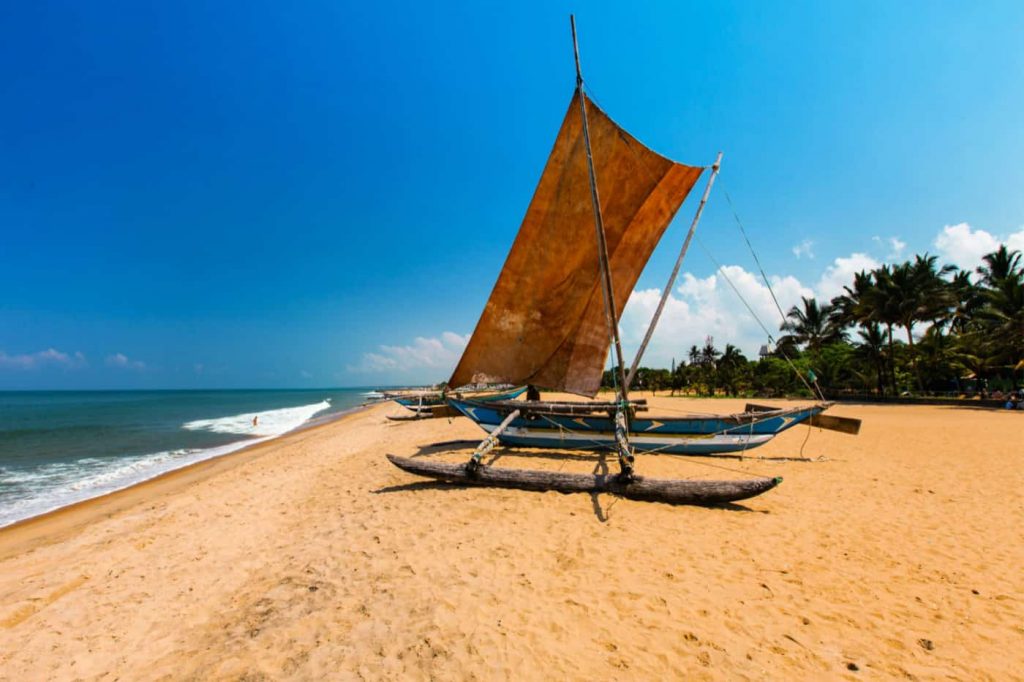
This is how to spend two weeks in Sri Lanka!
For the first time tourists to Sri Lanka, this is a perfect trip, which can make you get the most in two weeks. Of course, there are many things to see and many ways to make your journey more colorful. For example, if you have more time to explore, or just prefer the beach to hiking or history, there are some amazing seaside resorts on the east coast of Sri Lanka. Although Batticaloa is the largest, Bulugan Bay is our favorite surfing place. At Pasikuda Beach, you can walk one kilometer in the blue sea, and then the sea begins to flow through your waist.
Although we haven’t gone to Jaffna yet, this area is becoming more and more popular as another kind of scenery in Sri Lanka. Most of the northern part of the country was devastated during the civil war, but Tamil culture here provides a different experience from other parts of the island.
Wherever you go, people here are always incredibly friendly, helpful and sincere. Of course, Colombo residents are not afraid to fight in Pettah’s market, but then again, we are not afraid! “。